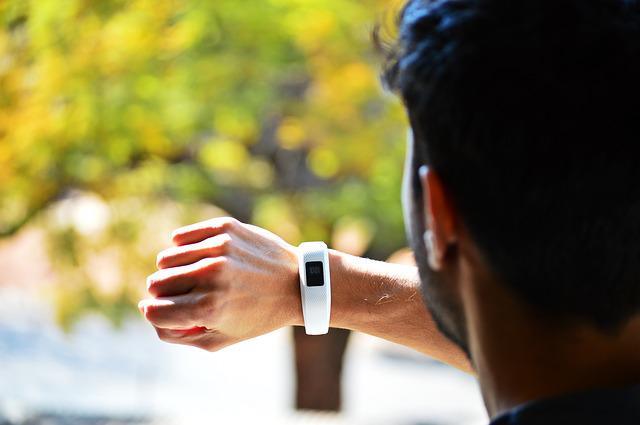
12-Sep-2022
What is Wearable Technology? And its Challenges
Wearable technology could be an innovative solution to medical problems. In this study, we searched the literature on the use of wearable technology in medicine. Some wearable technology applications are designed for disease prevention and health maintenance, such as weight management and physical activity tracking. Wearable devices are also used in patient care and disease management. Wearable applications can have a direct impact on clinical decision-making. Some argue that wearable technology could reduce medical costs, such as out-of-hospital rehabilitation while improving the quality of patient care. The big data generated by wearable devices presents a challenge and an opportunity for future researchers to apply artificial intelligence (AI) technology to this data. Many wearable technologies are still in the prototype stage. Issues such as user acceptance, security, ethics, and big data issues of wearable technology remain unsolved to improve the practical use and functionality of these devices.
What is Wearable Technology?
Wearable technology enables continuous monitoring of physiological and biochemical parameters, as well as physical activity and human behavior in everyday life. The most commonly measured data are heart rate, blood pressure, and body temperature, as well as blood oxygenation, posture, and vital signs such as an electrocardiogram (ECG), electrocardiogram (BCG), and physical activity using other devices. Portable photo or video devices can provide additional clinical information. Wearable devices can be attached to shoes, glasses, earrings, clothes, gloves, and watches. A wearable device can also be a device that attaches to the skin. Sensors can be placed in environments such as chairs, car seats, and mattresses.
Smartphones are commonly used to collect and store information and send it to remote servers for analysis. There are two main types of wearable devices used to study gait patterns. Some devices have been developed to allow medical professionals to monitor walking patterns, including accelerometers, multi-angle video recorders, and gyroscopes. Other devices have been developed for health consumers, including wrist-based activity trackers (eg, Fitbit), phone apps, and attachments. Wearable devices and data analysis algorithms are often used together to perform gait assessment tasks in a variety of scenarios. Wearable technology could be an innovative solution to medical problems.
In this study, we searched the literature on the use of wearable technology in medicine. Some wearable technology applications are designed for disease prevention and health maintenance, such as weight management and physical activity tracking. Wearable devices are also used in patient care and disease management. Wearable applications can have a direct impact on clinical decision-making. Some argue that wearable technology could reduce medical costs, such as out-of-hospital rehabilitation while improving the quality of patient care. The big data generated by wearable devices is both a challenge and an opportunity for researchers to apply more AI technologies to this data in the future.
The PUBMED database was retrieved in September 2018. All papers containing the term 'wearable technology' or 'wearable device' in their titles or abstracts were identified. In addition, the search was limited to articles within 10 years (2008–2018) of the publication date. Abstracts of this study (n=1126) checked information on 'applications of wearable technology in medicine'. The authors then reviewed these studies for information on wearable device applications and identified 67 relevant articles.
Challenges
Many wearable technologies are still in the prototype stage. Issues such as user acceptance, security, and ethics of wearable technology remain unsolved to improve the practical use and functionality of these devices.
User Acceptance
User preferences should be considered when designing clinical and home devices. The sensor system is redundant if the patient or clinician does not want to work with the sensor system. Body-worn sensor systems must be small, embedded, and easy to operate and maintain. In addition, it should not affect your daily behavior and should not directly replace a healthcare professional. Despite the importance of user preferences, high-quality research in this area is lacking. Researchers should be encouraged to consider the implications of user preferences when designing wearable sensor systems.
Security
Patient privacy and data security are primary concerns when using wearable devices, as HIPAA compliance can be a challenge. The communication security of data collected from wireless body area networks (WBANs) is a major concern (Ali and Khan, 2015). Encryption is an important component of complete data-centric security. Although it is generally safe to use encryption as an authentication mechanism within an organization's network for encrypted data and an organization's network, anyone with direct access to keys and certificates can gain elevated privileges. Key management is very important for strong security. The reliability of the underlying control cryptosystem was an important aspect of this security. However, the very limited nature of biosensors makes designing meaningful control schemes a difficult task.
Ethical issues
Mobile technology is increasingly used to measure people's moods, thoughts, and behaviors in real-time. A current example is the use of a smartphone to collect an environmental impact assessment (EEA). wearable technology that passively collects objective measurements of a participant's movement, physical activity, sleep, and physiological response; Smartphones and wearable devices with global positioning system (GPS) capabilities that collect specific information about where participants spend their time. Advances in mobile technology offer exciting opportunities to measure and model people's experiences in their natural environment, but they also raise new
ethical challenges.

Student
An inquisitive individual with a great interest in the subjectivity of human experiences, behavior, and the complexity of the human mind. Enthusiased to learn, volunteer, and participate. Always driven by the motive to make a difference in the sphere of mental health - and normalize seeking help through a sensitive and empathetic approach
Join Our Newsletter
Subscribe to our newsletter to receive emails about new views posts, releases and updates.
Copyright 2010 - 2026 MindStick Software Pvt. Ltd. All Rights Reserved Privacy Policy | Terms & Conditions | Cookie Policy